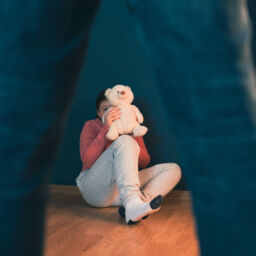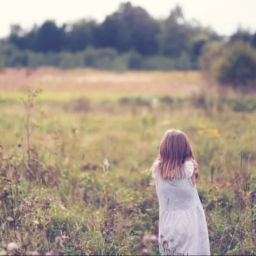
Recognizing Emotional Abuse In Children
by- Hannah Jagiri
Emotional Abuse in children is a deeply concerning issue that often goes unnoticed, leaving lasting scars on the child’s mental and emotional well-being. Unlike Physical Abuse, Emotional Abuse is more challenging to recognize, making it imperative for caregivers, parents, educators, and society to identify its signs.
This article aims to shed light on the subtle indicators of Emotional Abuse in children, emphasizing the importance of early recognition and intervention to protect their overall development and mental health.
What Is Emotional Abuse of Children?
Emotional Abuse is a form of maltreatment that undermines a child’s self-worth, emotional stability, and mental health. It can occur within families, schools, or any environment where children are present. This type of abuse may take various forms, including but not limited to constant criticism, humiliation, rejection, neglect, and exposure to family conflicts (Morin, 2022).
Signs of Emotional Abuse
There are several signs of Emotional Abuse, including (Carey, 2018):
1. Excessive Fear or Anxiety
Abused children may display excessive fear of authority figures, fear of failure, or fear of being abandoned, often lacking self-confidence and self-assurance.
2. Withdrawal and Isolation
Emotional Abuse can lead to children withdrawing from social interactions, isolating themselves, and avoiding relationships.
3. Sudden Changes in Behavior
Emotional distress may be present when behavior changes dramatically, such as becoming too quiet or displaying aggressive tendencies.
4. Low Self-Esteem and Self-Blame
Children enduring Emotional Abuse may develop low self-esteem and blame themselves for the mistreatment they experience.
5. Emotional Outbursts
Frequent emotional outbursts or unpredictable mood swings could result from the emotional turmoil they are facing.
The Prevalence Of Emotional Abuse
Emotional Abuse of children is prevalent, with 36.3% worldwide experiencing Emotional Abuse and 18.4% experiencing emotional neglect (Gama et al., 2021). New information from the CDC also shows that since the last year of the pandemic, over half of high school-aged children in the United States reported that they had experienced Emotional Abuse by a parent or other adult living in the home (Chen, 2022).
Emotional Abuse is also occurring in other parts of the world. Research suggests that 1 in 15 children in the UK has experienced Emotional Abuse (NSPCC Learning, 2021). Childhood Emotional Abuse is being self-reported by a more significant number of adults consisting of about 36% compared to Physical Abuse at 18% or Sexual Abuse ranging from 8-18 percent (Kumari, 2020).
Conclusion
Recognizing Emotional Abuse in children is a responsibility shared by everyone in society. When we understand the signs and take proactive steps to address emotional mistreatment, we can create a safe and nurturing space for all children to grow and thrive emotionally. Raising awareness about this critical issue is the first step towards protecting our children and ensuring their mental well-being for a brighter future.
We are here to support you on your journey to complete well-being. We bring awareness and education to 21 different types of abuse, including Sexual, Spousal, Physical, Psychological, Narcissistic, Financial, Self, Elderly, Isolation, Child, Workplace, Religious, Medical, Food, Authority, Educational, Political, Bullying, Cyberbullying, Child Sexual Exploitation, and Sex Trafficking, and help others heal and find peace. Please support our efforts by going to GoARO.org to learn how you can impact the Abuse Care Community and provide life-saving financial assistance with a donation.
Sources:
Morin, A. (2022, March 1). How to Recognize If a Child Is Being Emotionally Abused. Verywell Family. https://www.verywellfamily.com/what-is-emotional-child-abuse-4157502
Carey, E. (2018). Emotional and Psychological Abuse in Children. Healthline. https://www.healthline.com/health/child-neglect-and-psychological-abuse
Gama, C. M. F., Portugal, L. C. L., Gonçalves, R. M., Junior, S. de S., Vilete, L. M. P., Mendlowicz, M. V., Figueira, I., Volchan, E., David, I. A., Oliveira, L. de, & Pereira, M. G. (2021, March 17). The invisible scars of emotional abuse: A common and highly harmful form of childhood maltreatment – BMC psychiatry. BioMed Central. https://bmcpsychiatry.biomedcentral.com/articles/10.1186/s12888-021-03134-0
Chen, K. (2022, April 22). New data shows emotional abuse increased among teens during pandemic – stanford medicine children’s health blog. Healthier, Happy Lives Blog. https://healthier.stanfordchildrens.org/en/data-shows-emotional-abuse-increased-among-teens-during-pandemic/
Statistics on emotional abuse. NSPCC Learning. (2021, December). https://learning.nspcc.org.uk/research-resources/statistics-briefings/emotional-abuse
Kumari, V. (2020, November). Emotional abuse and neglect: Time to focus on prevention and Mental Health Consequences. The British journal of psychiatry : the journal of mental science. https://www.ncbi.nlm.nih.gov/pmc/articles/PMC7589986/#:~:text=Despite%20difficulties%20in%20recognising%20and,(8%E2%80%9318%25)%2C%20or










